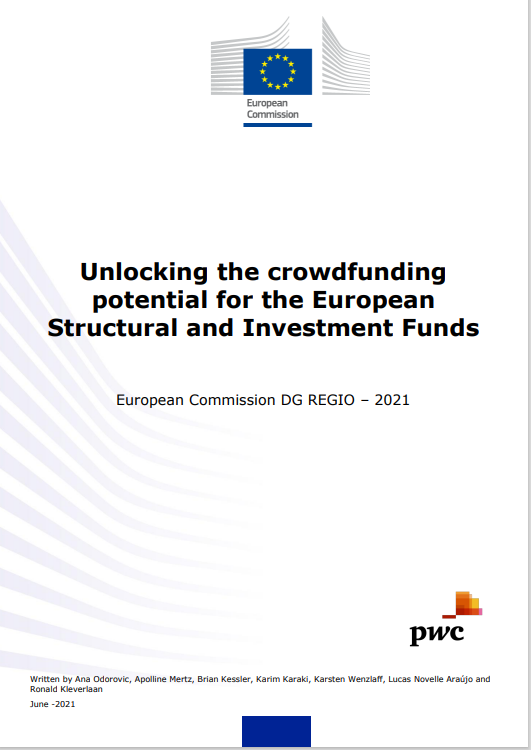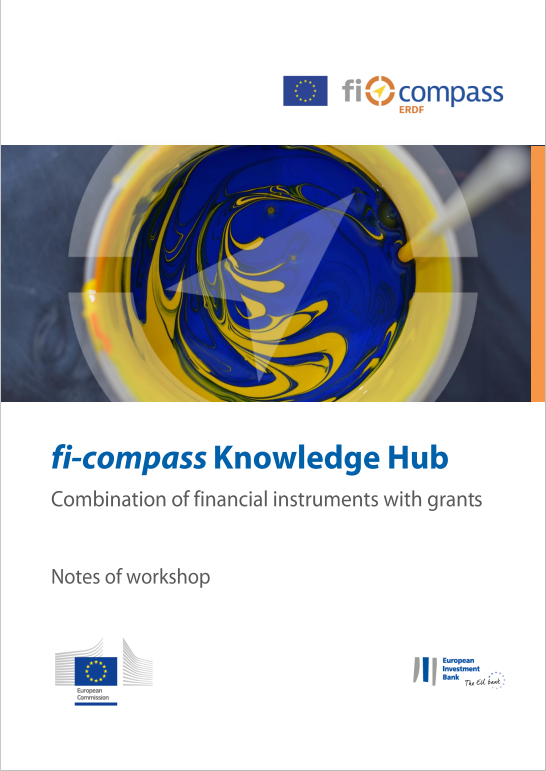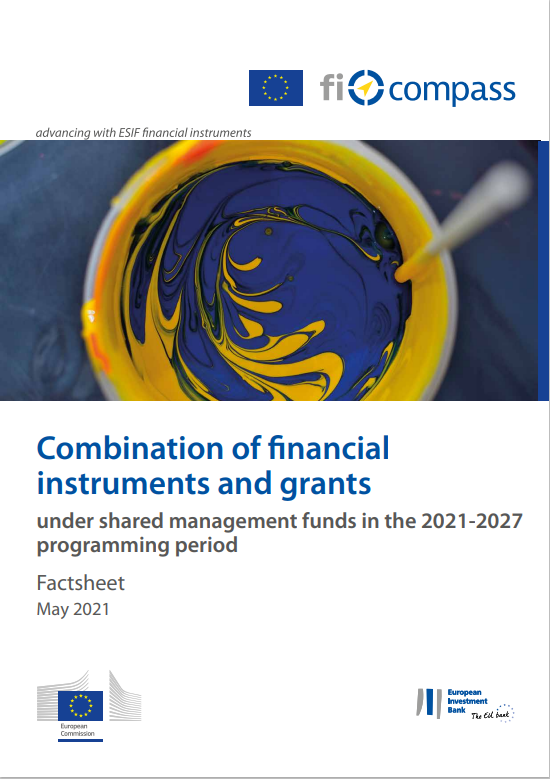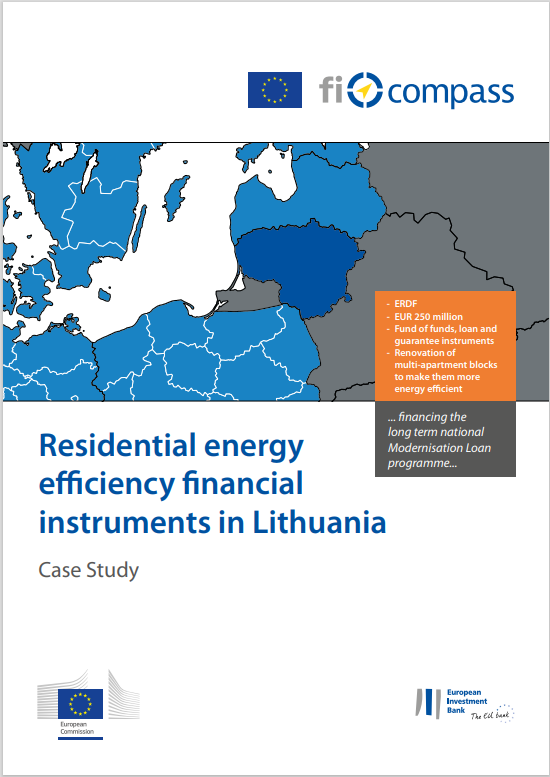Under the heading "Together for recovery", this year #EURegionsWeek programme focused on the capacity of the EU and of national and regional governments to support European citizens and their local communities with practical measures and public policies aimed at investing in a fairer, greener and digital future for recovery.
In this respect, the new cohesion policy and new generation of EU programmes for 2021-2027, as well as the EU's financial instruments for tackling the COVID-19 crisis, were centre stage in the event which gathered thousands of participants all over Europe.
In a well-attended workshop named #EURegionsWeek 2021: Sustainable, participatory and affordable. Innovative forms of financing, moderated by Jonathan Denness, Head of Unit Financial Instruments and relations with International Financial Institutions, DG REGIO European Commission, several speakers from both the EIB and DG REGIO presented how green bonds, crowdfunding and loans combined with grants could in an innovative way help and address current economic challenges.
Sustainable financing: experimenting mini bonds
“Among the various ERDF financial instruments to support cohesion policy, managing authorities are often well aware of traditional loans, bank guarantees and equity but less familiar with mini bonds as they may not be an instrument of choice by most of them”
Wojciech Furmanski, Policy Analyst, DG REGIO
“The scheme works by itself, our money is only there to guarantee potential losses which provide like a guarantee protection,” he went on explaining. Among the various categories of specific bonds, he named: corporate bonds to encourage a more competitive Europe, project bonds for a more connected Europe, social bonds to help to the cohesion of a more social Europe and green bonds to make Europe greener.
“Green bonds are the future and part of the Commission’s efforts to secure the New Green Deal”, commented Jonathan Denness, expressing his confidence that present successes would encourage an appetite for this alternative type of finance.
Among the successful bond operations, Wojciech Furmanski mentioned the ERDF backed mini bonds in the South of Italy where the Puglia managing authority has introduced a bond scheme for innovative SMEs, enabling eligible ones to secure the investment they need to develop their business. This was namely the case of Roboze, an innovative tech start-up which used mini bonds to develop state of the art 3D printing technology. Supported by a EUR 3 million equity investment by Italy's Ministry of Universities and Research (MUR), Roboze is today a successful business developing machines and high performance components for worldwide giants such as Airbus, Bosch and General Electric.
Participatory: exploring crowdfunding opportunities
In the second part of the workshop, Tsvetelina Blagoeva, a Senior Manager in Advisory practice, Government & Public Service for PwC shared the conclusions of a 2021 report from the European Commission DG Regio named “Unlocking the crowdfunding potential for the European Structural and Investment Funds”.
Often aligned with the priorities of the Cohesion Policy, this innovative and alternative source of finance for SMEs and micro enterprises can be used to channel ESI Funds, contributing to a competitive and social Europe that is close to its citizens.
The first key finding from the report is that in most Member States, governments can and are already cooperating with crowdfunding platforms generating encouraging results: “The crowdfunding market is growing fast across the EU Member States with 16 countries, which are already fit for leveraging crowdfunding to channel ESI Funds in the short term. In this regard, Estonia, Germany and the Netherlands have developed a strong crowdfunding ecosystem, with a significant financial-return crowdfunding market and a solid regulatory framework in place”, she explained.
She went on developing the benefits and risks of crowdfunding. Among the key benefits, we can name amongst others, the capacity of crowdfunding to increase private co-investment in ESIF policy priorities, improve the flexibility, efficiency and accountability of the disbursement of public funds driving a deeper and far-reaching impact by empowering local stakeholders.
Answering to a question from the audience on whether it would be feasible to use crowdfunding with other European Regional Funds, her answer was clear: “Though often catering for the needs of final recipients of the European Social Fund, crowdfunding is not limited to ESF and can be used with the European Regional Development Fund for instance”.

To close the session on crowdfunding on a positive note, Jonathan Denness made a question of interest: “how can one promote crowdfunding in markets where it is less developed”? Tsvetelina suggested various options: first, helping the market grow by creating of a website that supports the development of a local crowdfunding market as seen in the case of the BPI France platform tousnosprojets. Secondly, she proposed engaging with crowdfunding platforms through the use of grants as illustrated in one of the blueprints models or even learning from countries with a strong crowdfunding ecosystem”.
Combination: affordable and simpler
To close the workshop, Olivier Dumoulin, Policy Officer, DG REGIO European Commission, presented a quick guide on how to combine grants and financial instruments in a single operation (a major change, as compared to the 2014-2020 period) as well as the type of projects that can be supported by combination.
“As you may know, whilst such combination was already possible in some limited cases, the new CPR allows for the combination of a much wider typology of grants – including investment grants or capital rebates for instance. This provision is a great source of simplification compared to the 2 operations process where a final recipient would have to go to the managing authority for the grant and to a financial intermediary for the financial product”, he said while he added: “This new scheme should support projects that do not generate significant returns or savings to be economically viable as well as investment in energy efficiency and SME competitiveness including microfinance”.
Referring to the Article 58 (5) of the new Common Provisions Regulation, he reminded the audience that CPR sets a number of conditions to combinations in one operation. One of them is that both forms of support – the grant and the financial product – shall be provided by the body implementing the financial instrument (a financial intermediary or a holding fund).
In concrete terms, this would mean that financial intermediaries which will be selected to implement the combination, to provide both forms of support and they would receive management costs and fees for that. “But in the meantime, in some specific case, one may imagine schemes, where the financial intermediary would provide only the financial product, and a holding fund would manage the grant. There will be in any case, one single funding agreement which will be signed, and which will cover both elements – the grant and the financial product” he stressed.
While explaining the conditions for designing a combination instrument, he said: “managing authorities need to demonstrate that the combination addresses market failures and that the grant is directly linked and necessary to the financial instruments”.
In practice, this means that the impact of the financial instrument will be improved by the grant element, in terms, for instance, of the volume of investments that will be financed or the policy objectives that will be attained.
Olivier Dumoulin went on demonstrating the strong impact that combination already has in the energy efficiency sector in Lithuania.
He gave as an example the successful Lithuanian Energy Efficiency financial instrument, also known as the ‘Modernisation Loan’ that forms the centrepiece of the Lithuanian government’s programme to improve energy efficiency in residential properties.
Thanks to this financial instrument based on combination, 2.4 million square metres were renovated, 50 000 households were supported and 95 tonnes CO2 per annum were saved.
For more information, you can also listen to our podcast episode on combination on the fi-compass website.



